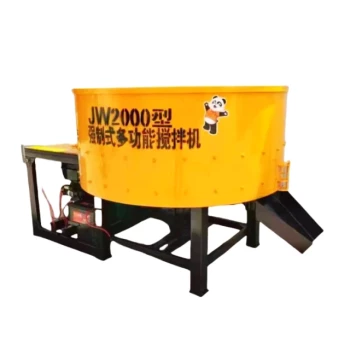Before using a hoist, operators must thoroughly understand its structure, capabilities, and safety protocols. Key steps include reviewing the manual, performing load tests, inspecting for wear, and establishing clear communication signals. Proper lubrication and certification checks are essential, and operators must remain vigilant during operation to prevent accidents. Ensuring no bystanders are near the hoist and adhering to standardized commands further enhances safety.
Key Points Explained:
-
Understand the Hoist's Structure and Performance
- Operators should be trained on the hoist's mechanical components (e.g., chains, hooks, brakes) and load capacity limits.
- Familiarity with the hoist's operational range (speed, lifting height) prevents overloading or misuse.
-
Pre-Operation Preparations
- Manual Review: Study the manufacturer’s manual for model-specific instructions and warnings.
- Load Testing: Conduct a test lift with a dummy load to verify functionality before actual use.
- Certification Check: Ensure the hoist has up-to-date inspection certifications for compliance.
-
Inspection and Maintenance
- Chain Lubrication: Regularly lubricate chain links to reduce friction and wear.
- Wear/Damage Inspection: Examine hooks, chains, and brakes for cracks, deformation, or corrosion. Replace damaged parts immediately.
-
Safety Protocols During Operation
- Clear Communication: Prearrange hand signals or verbal commands with the team to coordinate lifts.
- No Bystanders: Keep the area around the hoist clear to avoid injury from falling loads or swinging equipment.
- Operator Presence: Never leave the hoist unattended mid-operation to prevent uncontrolled movements.
-
Post-Operation Practices
- Store the hoist properly after use and document any issues for maintenance follow-up.
By integrating these steps, operators can mitigate risks and ensure efficient, safe hoist operation. Have you considered how regular training refreshers could further reinforce these practices?
Summary Table:
| Key Aspect | Action Steps |
|---|---|
| Understand Hoist Structure | Train on mechanical components, load limits, and operational range. |
| Pre-Operation Checks | Review manual, conduct load tests, verify certifications. |
| Inspection & Maintenance | Lubricate chains, inspect for wear/damage, replace faulty parts. |
| Safety During Operation | Establish clear signals, keep bystanders clear, monitor continuously. |
| Post-Operation Practices | Store properly, document issues for maintenance. |
Ensure your hoist operations meet the highest safety standards with GARLWAY’s durable and reliable lifting solutions. Our expertise in construction machinery, including winches and concrete handling equipment, helps contractors and builders optimize efficiency while minimizing risks. Contact our team today for tailored advice or to explore our product range!
Related Products
- Portable Cement Mixer with Lift Concrete Machine
- Ready Mixer Machine for Construction Ready Mix Machinery
- JDC350 Small Cement Concrete Mortar Mixer
- HZS90 Large Multiquip Concrete Mixers for Construction
- Auto Concrete Cement Mixer Machine New
People Also Ask
- What advantages do self-loading concrete mixers offer in terms of concrete quality? Enhance Precision & Durability
- How can material buildup or adhesion in a self-loading concrete mixer be prevented? Key Strategies for Efficiency
- How do self-loading concrete mixers benefit construction in rural or remote areas? Boost Efficiency & Cut Costs
- What are the key considerations for the long-term sustainability of self-loading concrete mixers?
- How is the mixing process of a self-loading concrete mixer carried out? Efficient On-Site Mixing Explained
















